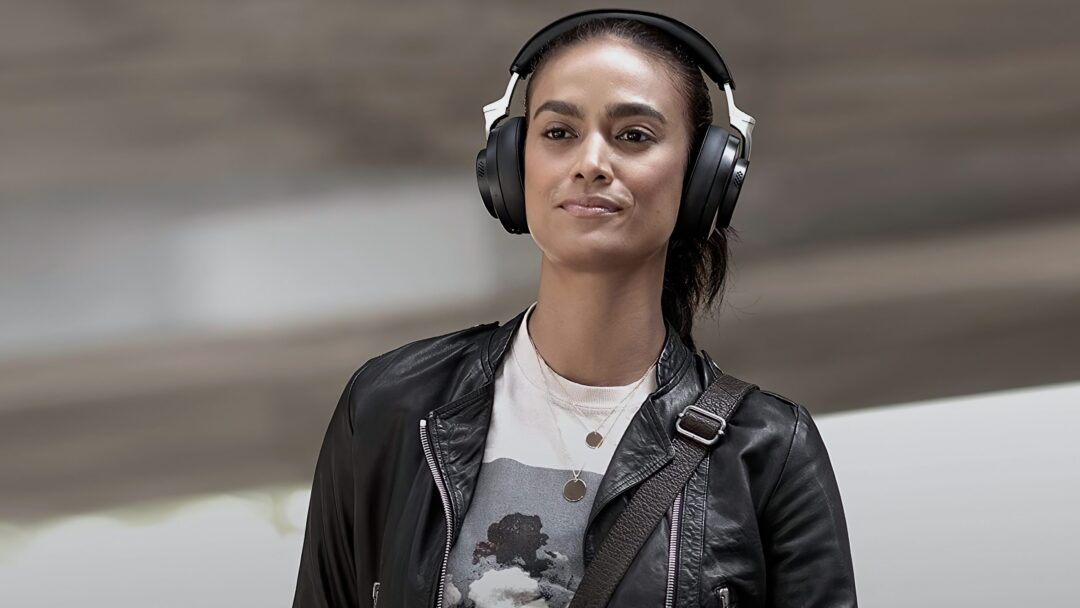If you need a pair of noise-canceling headphones, there are two ways to go. If you already have some really good headphones that you use for serious listening, but lack someone with active noise cancellation, then you may be looking for the headphones that attenuate the noise the best. That will then be the main purpose.
But if you instead want a pair of headphones that “do everything”, then you might want to choose the noise-cancelling headphones that actually sound the best, albeit just decent in the noise reduction department. Headphones that do a good enough job at suppressing the noise from the flight cabin or train compartment, while the real strenght lies in the quality of the music that comes out. Shure Aonic 50 is in the latter category.
From the creator who knows sound
Shure has extensive experience in making headphones for studio producers and musicians, and we have fallen head over heels for one model after another. The most impressive ones are probably the closed SRH1540 and the open SRH1840. They both cost the same as the Aonic 50, and are in the high-end class for the regular passive type with cable.
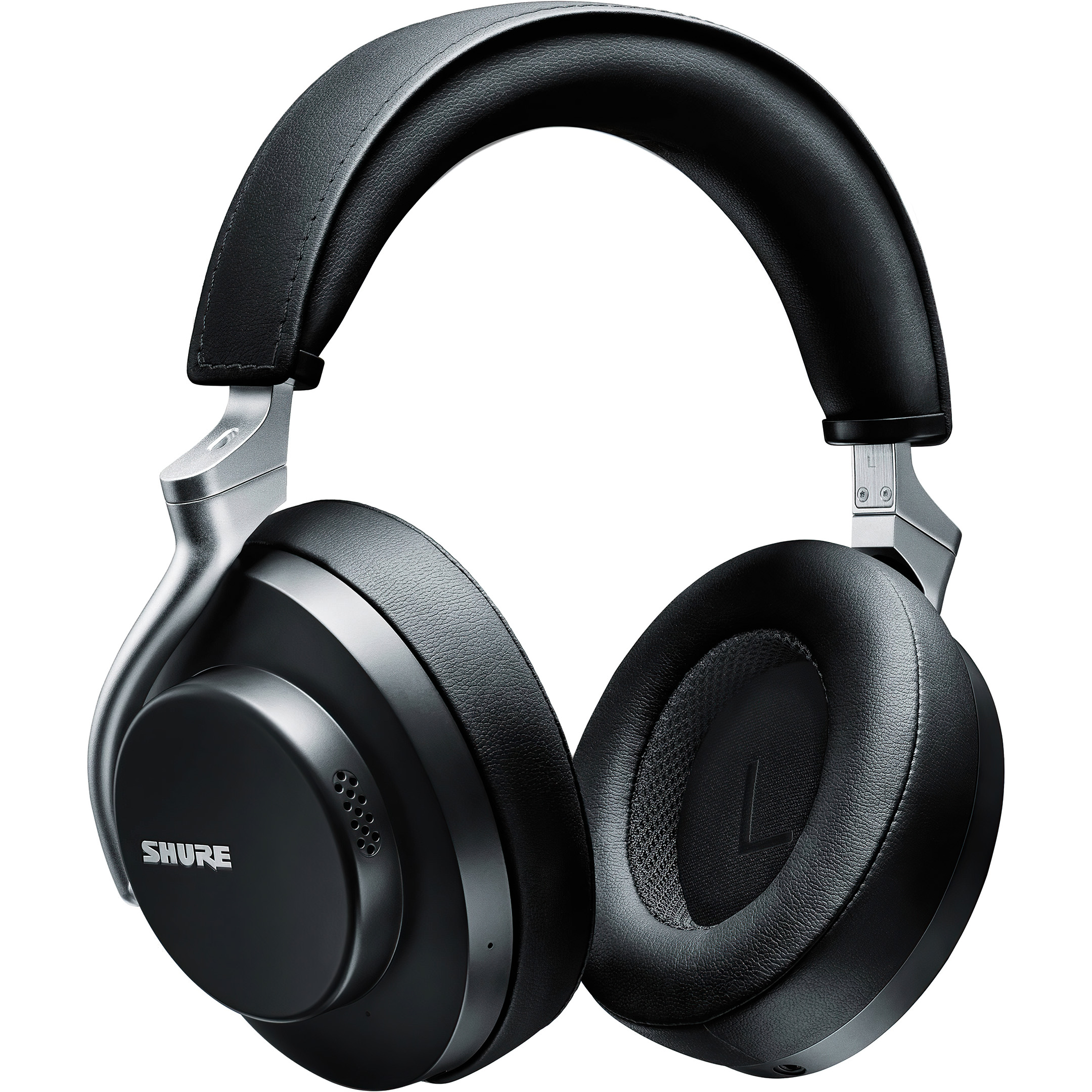
Together with a headphone amplifier, both models will send you to the seventh heaven compared to all noise-canceling headphones on the market. But the hope is that the Aonic 50 will at least give a taste of this quality level.
The headphones support a rich selection of well-sounding codecs for Bluetooth, including AAC for Apple’s iPhone users, and aptX HD and the higher-resolution LDAC that are both available for Android phones. With aptX LL, the sound is also completely synchronized with the images on film and games. Again, assuming you have an Android mobile.
Aonic 50 has real buttons and switches
Where some headphones are maneuvered by swiping up, down and away along the surface of the ear cups, Shure has gone for traditional buttons and switches. This means that you cannot skip from song to song on the headphone itself, but must do so on your phone. But there is something trustworthy about buttons. It never goes wrong, and even out in the drizzle you can trust that the Aonic 50 works well. Even if the headphones are not IP-certified and thus are not guaranteed to withstand rain and dust. But they seem to be of such durable quality that I personally would not worry too much. Just use common sense.
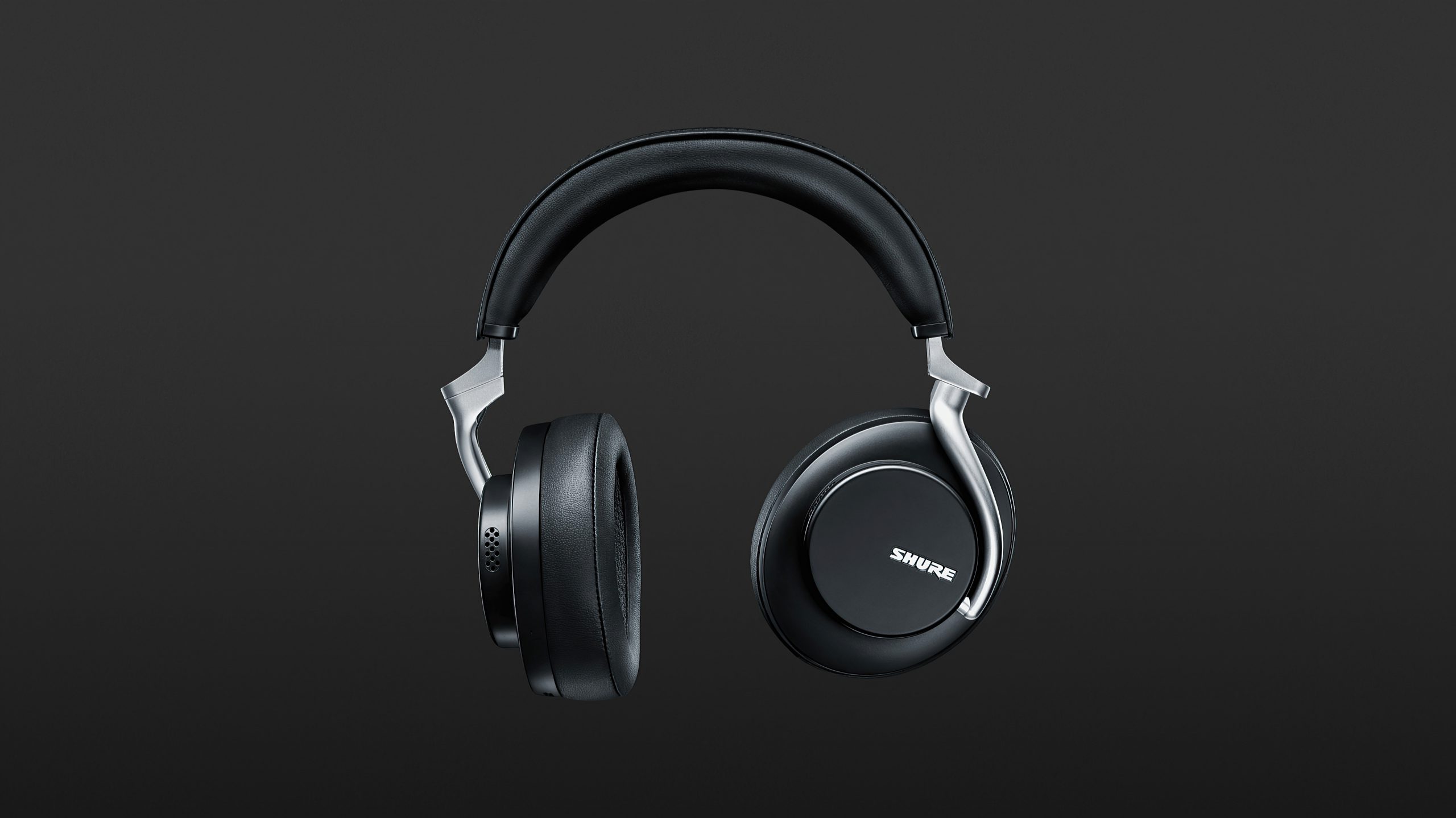
Ease of use and fit
Pairing is done in the usual way: from the off state, hold down the button, and keep holding it down until a female voice says “pairing mode”. Then you find it in the phone book, and the lady says “connected”.
Noise reduction is activated by pushing a switch up. The same switch is pushed all the way down to reverse – ie let in and amplify ambient noise. When in the middle position, both functions are off.
If you download the app, you can select the level of ambient noise and noise reduction. I even prefer to set them to full, and then forget about the whole app. But it is handy if you want to change the sound balance (EQ), check battery level and it can also play locally stored music files. The app is also the only way to update the headphones with new firmware.
When it comes to fit, the Aonic 50 is a dream to have on your ears. The cushions are much thicker than on the Sony WH-1000XM4 and Bose NCH 700, and also so soft that they both sit comfortably around the ears, and also insulate very well. They work just fine without activating the noise cancellation. It is when you want the little extra that you activate it.
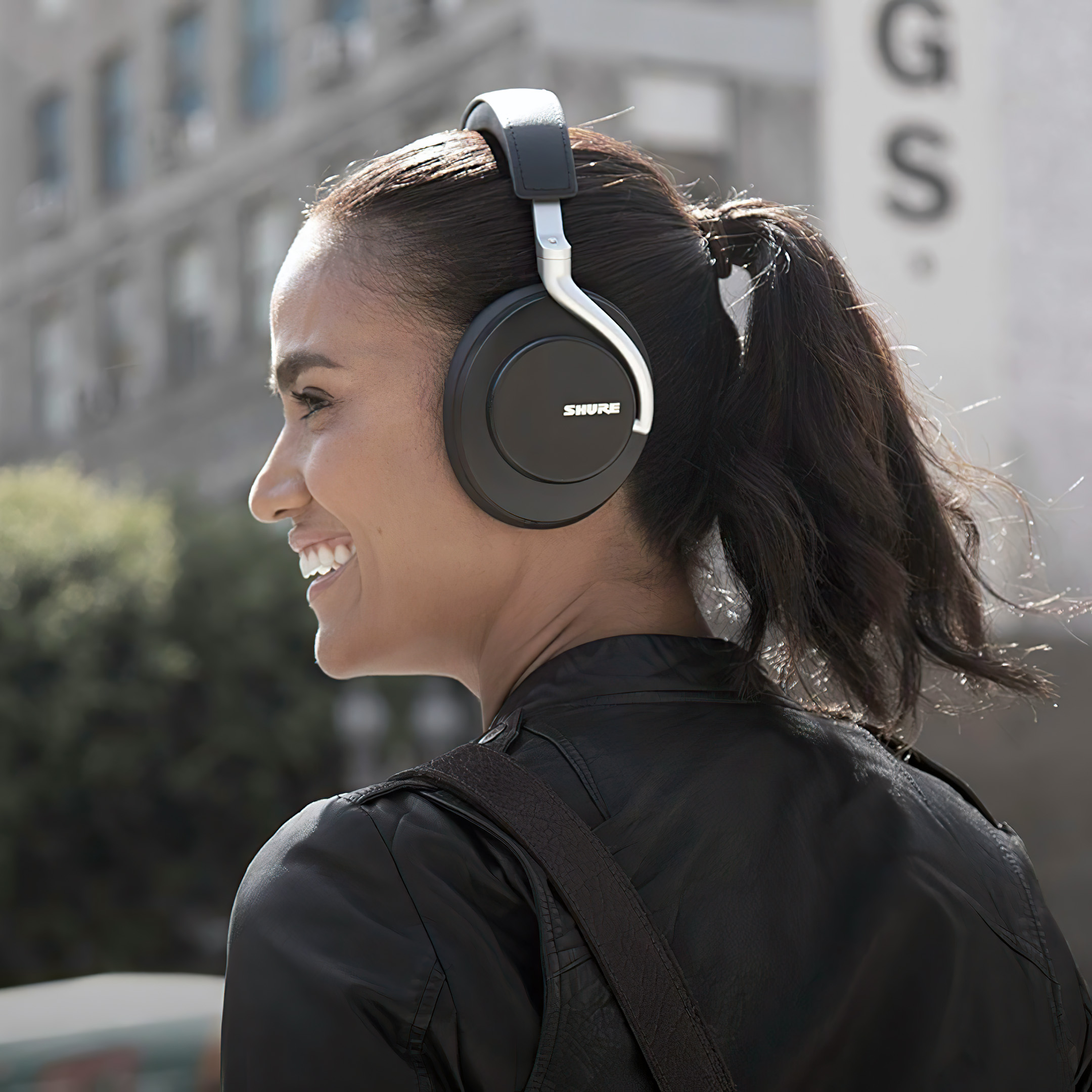
Noise-Cancellation
The passive mode headphones effectively attenuate frequencies from the midrange range (1 kHz) and upwards, which is probably why the active noise attenuation only attenuates the frequencies below this. In comparison, the best silencers from Sony and Bose actively attenuate the entire frequency range. But when Shure’s passive and active noise reduction work together, it’s still good. Absolutely good enough to be able to sit on the plane without getting annoyed by cabin noise.
Sony WH-1000XM4 is admittedly in a separate league when it comes to noise suppression, while Shure is in the class “good enough”, and lies in the middle of the tree in the premium class. Just be aware that the noise reduction is a bit buzzing, so if you are in a quiet environment, you can turn it off.
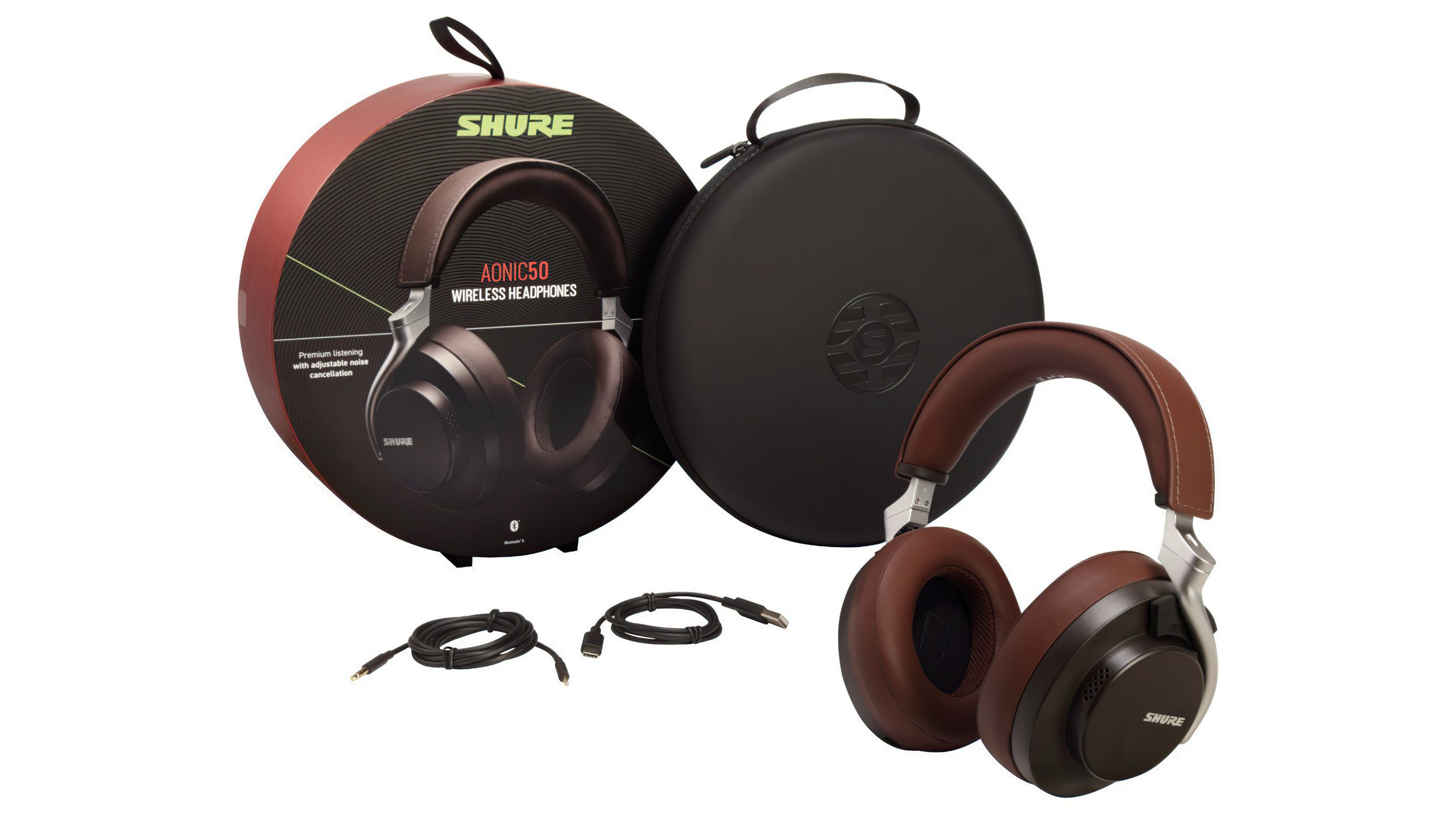
Aonic 50 is the definition musical
Which brings me to the point initially. With Shure Aonic 50 you do not get the very best noise reduction. But you get something even better: namely some of the very best sound from some headphones with active noise reduction!
It’s strange how linear and balanced the Aonic 50 sounds. It does not have the extravagant bass and gentle midrange of Sony, which honestly gets a little too juicy and full if you like honest sound. Instead, the Aonic 50 provides a balanced bass that sounds right. This means that you hear a much bigger difference in the sound structures of a double bass compared to an electric bass, and even music that beats with violent drum rhythms and synth bass, comes out with more layers and more air.
The sound is very good with the iPhone, but even better with an Android phone that supports LDAC. The sound opens up more, where it can be sharpened a little (just a little) in the treble range with the iPhone.
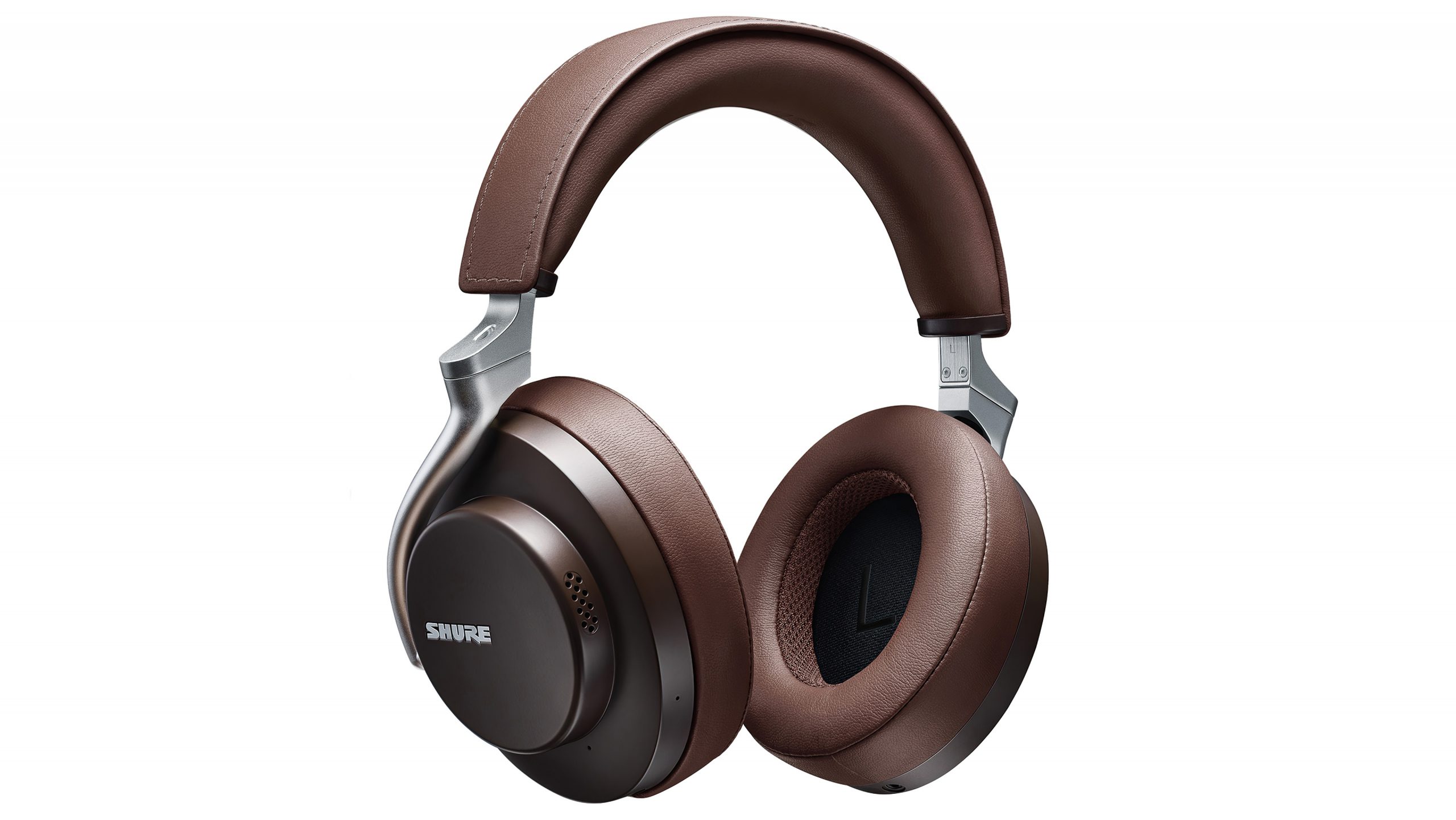
DJ music: more than just bass
The balanced sound means that one appreciates to a greater extent the work the DJ has done in the studio by adding layers upon layers of effects and artificial instruments, and placing elements around in an airy stereo sound image. With the Sonys, it’s easier to just focus on the hard – hitting bass rhythms. Strictly speaking, but still.
Not for that, the Shure watches can also kick off when they should, and the tilt is not erased by the stick. Just listen to the great bass tones on the RnB song Slow by Jerry Folk. But no matter how much the headphones are set to slam into the bass drum, they will never forget the rest of the tone register. There is a touch in the edge beat of the snare drum, the voice is airy and present, and the guitar samples sound crisp and airy. Simply a beautiful sound image, which neither the Sony WH-1000XM4 nor the Bose NCH 700 can challenge.
Call quality
When I first got the headphones for testing just before the summer holidays, the conversation sound was clear and distinct, but a little thin. The interlocutor heard my voice as a bit sharp, in addition to background noise being audible. With a firmware update coming in mid-July, this got a lot better. The voice became rounder, more natural, while background noise was suppressed well. You have probably had to try and make a few mistakes to optimize the microphones, of which six have radiation characteristics to the mouth. It is probably this beam characteristic that has had to be fine-tuned in the software.
Competitors to watch out for
If you are looking for excellent sound rather than the very best noise reduction, you may have thought in the direction of Beyerdynamic Lagoon ANC, B&W PX7 or B&O Beoplay H9. Well, the truth is that I personally do not actually think H9 sounds as good as everyone should have it, with a little too woolly and stuffy midrange and also too little power. B&W PX7 is much better, but if you are looking for neutral sound, they are a bit dark in tone. The Beyerdynamics, on the other hand, are a far more enterprising competitor, and one that should definitely be considered if you are looking for the best sound. But they are perhaps a little cautious in the bass again, where the Shure Aonic 50 has more – but again also very balanced – bass.
Conclusion
The Aonic 50 is Shure’s first headphone with active noise reduction. Let’s hope they are not the last. Here you get excellent comfort with soft, thick pillows and effective passive noise reduction. Activate the noise cancellation, and the cabin noise from the aircraft or the cabin from the train is suppressed to the point that it is only the music to focus on.
Where there are headphones with even better noise reduction, we are not as sure that you get the same good sound quality from some other noise-canceling headphones. Shure Aonic 50 is really something special when it comes to sound quality and tonal balance.
The call quality has also improved with the latest firmware update, and then there is probably not much more to wonder about. If you are going to have one headphone that does everything, this may be the closest you are coming right now.
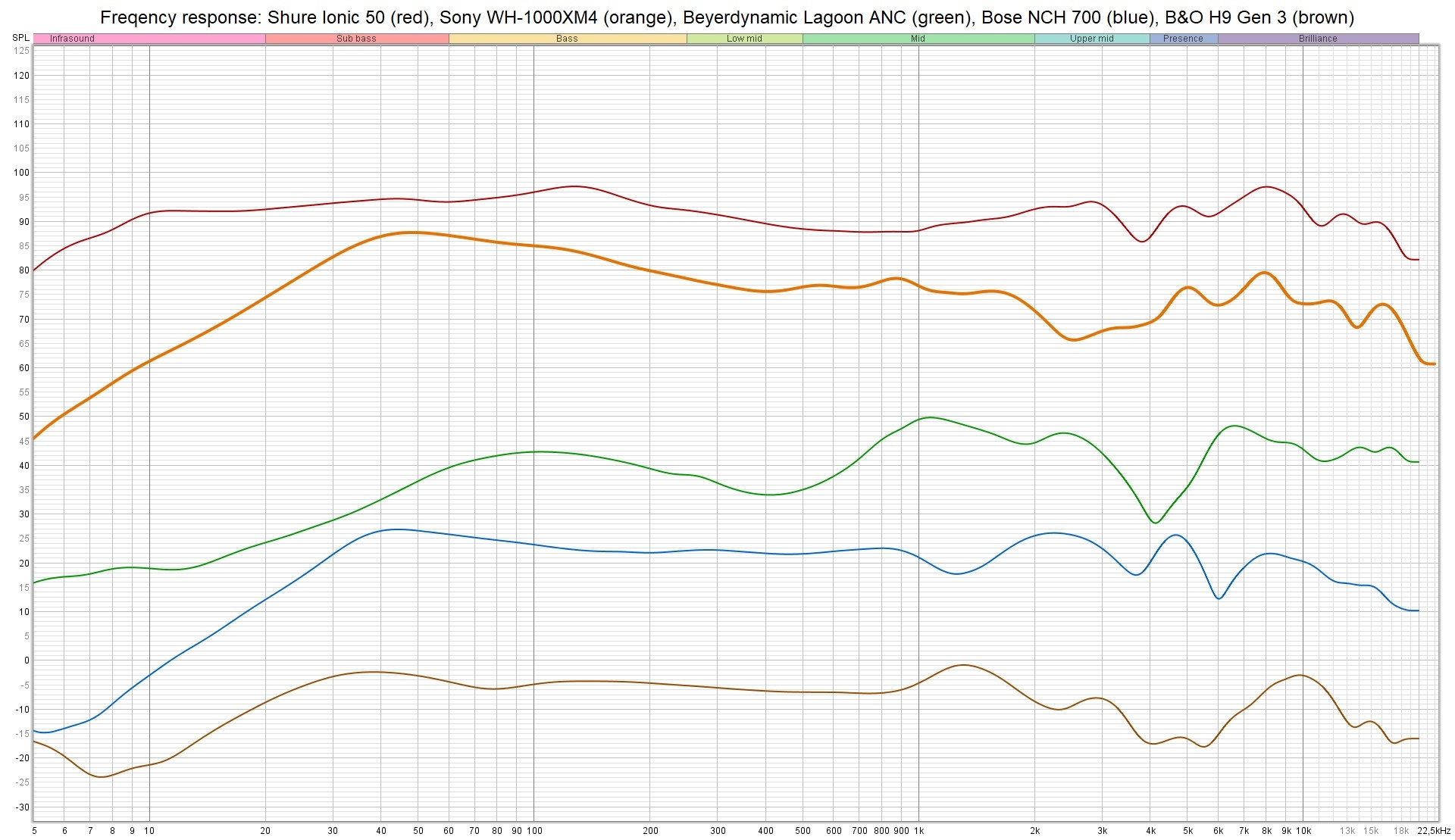

We think
The sound quality is superb, with a neutral sound balance and a lot of details. Fit is excellent, with good passive noise reduction. You never go wrong with physical buttons. Active noise cancellation could have been better. No voice control (but who cares). Not foldable.
330 €
Specifications
- Type: Over-ear, closed, wireless
- Elements: 50 mm
- Frequency range: 20 Hz – 22 kHz
- Active noise reduction: Yes
- Battery life: 20 h with ANC
- Voice control: No.
- App: ShurePlus Play
- Connections: Bluetooth 5 (SBC, AAC, aptX HD / LL, LDAC), 3.5 mm analog
- Weight: 334 g
- Colors: Black or brown
- Web: shure.eu
